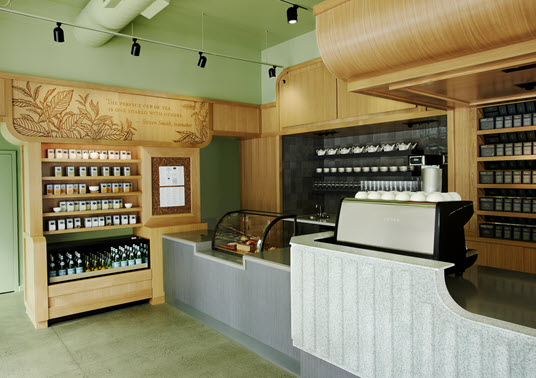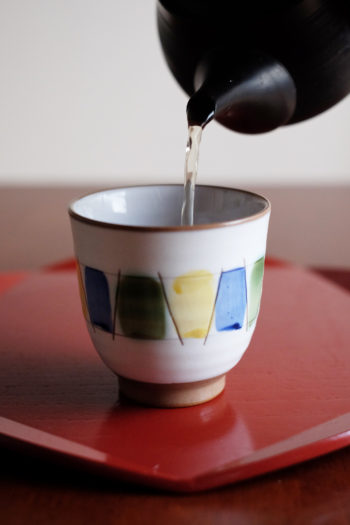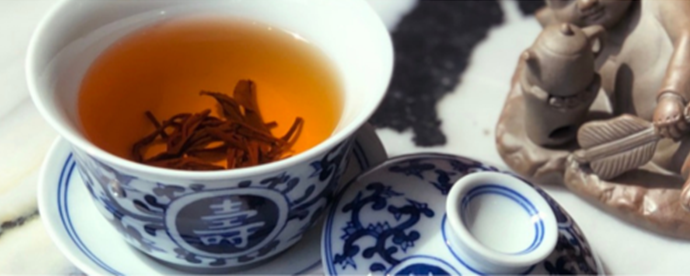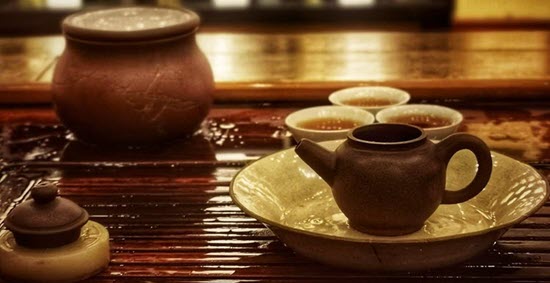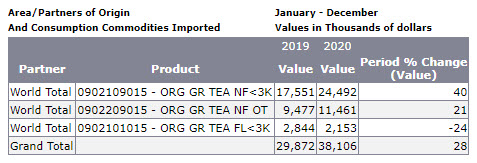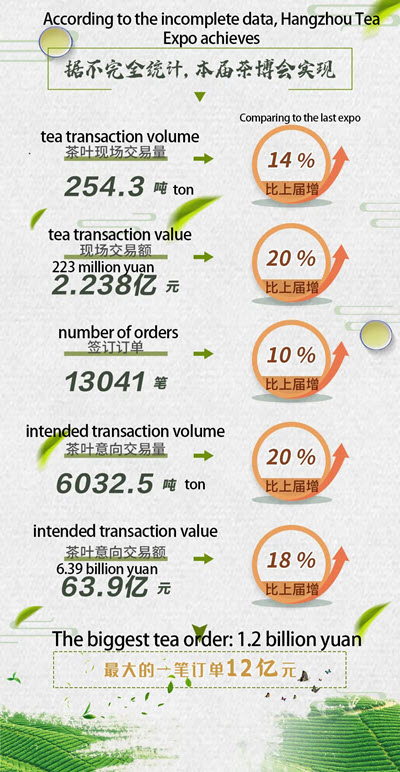First-flush teas flown to J.T. Ronnefeldt Tea’s blending and packaging facility in Frankfurt Germany account for only 0.02% of the company’s offerings by weight, yet in a single season “flight tea” generates more greenhouse gas emissions than the millions of kilos transported by ship, says owner Jan Holzapfel. He acknowledges that for a premium tea supplier, abandoning expedient air cargo after 75 years is a significant step: “however, we have a responsibility towards nature that we take very seriously.”

Sustainable Wholesale
Sustainable best practices in the tea gardens are well established and often third-party certified. The tea supply chain links that follow also offer significant opportunities to protect the environment and conserve energy resources. Costs vary by origin and distance to market but middlemen add 20% or more to the cost of delivering tea to retail. Jan Holzapfel, the owner of 198-year-old J. T. Ronnefeldt Tea, has for five years published a sustainability report that clearly states the company’s goals and measures progress toward achieving these initiatives. In 2021 Ronnefeldt is replacing its tea packaging with eco-friendly Teavelopes, embracing traceability, and reducing emissions by no longer air freighting tea.
Dan Bolton: Ronnefeldt eliminated air cargo in favor of sea transport and will complete its conversion to sustainable packaging materials by year-end. The company is also trading some of its gas-powered vehicles for electric and hybrid-powered vehicles. Will you share with listeners your vision of sustainable wholesale in tea.
Jan-Berend Holzapfel: Tea is one of the most natural products that you can find on earth. So we as tea producers and tea suppliers must do everything we can to ensure that we continue to have great teas from around the world.
It is a tradition to have the first flush season teas from Darjeeling transported by air to Germany and Europe, but we stopped this year. Anybody out there waiting for his first flush will have to wait maybe six or eight weeks longer than normal.
We want to make sure that we get the tea here in an as environmentally friendly way as possible. That is the reason why we have stopped air cargo completely.
I think it is the right thing to do.
Another of the many, many steps that we have taken is to eliminate all the traditional packaging materials. We are well on the way to meeting our 2021 goal of fully sustainable packaging materials.
It’s not that easy I have to say. Supply is always an issue.
We want safe and customer-friendly packaged material, of course, our team has been doing great work here and found all the different packaging materials that we need so that all will be sustainable by the end of this year.
For the last five years, we have been publishing our Sustainability Report to show our commitment to sustainability along the entire supply chain from cultivation and transport to refining, packaging, and shipping.
Here are the company’s five sustainability goals at a glance:
- 100% sustainable packaging materials
- Increase training hours per employee
- Procure tea from small plantations
- Increase share of organic teas on offer
- Transition to electric, hybrid, or fuel cell vehicles
Dan: You mention that Ronnefeldt is also increasing the proportion of organic tea in its range.
Jan: We are not an organic company yet, but we try to increase our tea selection in our organic range on a constant basis. The good thing is that tea gardens in Asia, but also in Africa, are turning to organic manufacturing methods and therefore we find more and more selection of organic teas. And we are happy to put them Into our range.
As far as we can see our customer side really appreciates organic, it’s a small proportion of the market, but it’s growing, especially with the younger people.
Dan: What is your view on traceability and public disclosure of source gardens?
Jan: I think it’s a very good idea. We see that a lot of customers are really keen and really interested in finding out where the tea is coming from, how it has been produced, how it can be used, and sometimes they are even interested in corporate social responsibility programs at these tea gardens. We are looking for a way to put traceability information online. I think that is the best way because sometimes tea gardens and supplies are changing quite often during the year. If we do it, for example with a QR code and website so that we can really provide up-to-date information about all the specific teas that are available.
One thing we are also trying is to promote new tea growing areas.
There are some fantastic teas from New Zealand, Columbia, Mozambique, Korea, you name it and we are really trying to promote them and help them to grow so that we don’t have to rely on the big tea-producing countries in the future.
Dan: Will you discuss your commitment to education and the return to face-to-face instruction beginning in July.
Jan: Quite often you find that service people in the hotel business all know how to handle the coffee machine, which is quite easy. They might be very interested in wines and make perfect recommendations, but tea seems to be a little bit more difficult. So we have set up different levels of education depending on the outlet, the style of the restaurant, or the cafe in the hotel.
We provide anything from a quick 40-minute training with the iPhone or Google app, or up to two days with our team. The gold standard is our seven-day trip to the tea gardens in Sri Lanka.
We are very happy that we are going to restart face-to-face training in July after the lockdowns. It has been a really, really long time. We can educate about tea, but one key element is really tasting the tea and the interaction with instructors and peers. That is something which can really be only done face to face.
Dan: Ronnefeldt supplies upscale hotels in more than 80 countries. How is the recovery progressing?
Jan: We already see a lot of hotels booking our training programs, our education programs. Before the pandemic, we trained 7,000 hotel staff members each year and that is where we want to come back to as soon as possible.
We have seen that since January and February business is picking up in hotels and restaurants in Asia, for example, in China, Korea, and Japan. These are now hot markets for us, but there’s one issue — it’s local tourism now, so it’s the Koreans visiting Korean hotels. There is no international tourism yet.
In the Middle East hotels are starting to be filled up, but again, it’s local tourists. Europe got a late start. We see restaurants, cafes, etc., being filled up since May but again, international tourists, for example from China or from the United States, are still not here.
I’m optimistic. I think that tourism will return in summer, maybe early fall.
We already see that the hotels in the countryside, real tourist destinations, are already filled every weekend here in Germany, Austria, and Switzerland.
What will take much longer is business travel to trade shows, conferences, etc., which might take until next year. City destinations still have a lot of capacity to fill.

Ronnefeldt TeaAcademy®
There are more than 20,000 graduates of the Ronnefeldt TeaAcademy® a program established in 2000 to increase the number of tea experts among beverage professionals so that they can offer the best service for their restaurant or hotel.
Frank Holzapfel, who created the academy, wrote at the time that “High-quality tea alone is not enough, the tea needs the right preparation, the perfect handling, and the creative staging on-site in the hotel and restaurant by competent and trained employees.”
Taught in Frankfurt, the two-day Silver-level training is for junior managers in food and beverage with at least one year of professional experience. Apply in writing using the link below and Ronnefeldt will confirm your eligibility in a personal interview.
Ronnefeldt TeaMaster® Silver certificate holders seeking to bring their tea expertise to perfection may apply for an in-depth seven-day immersion at origin in Sri Lanka. The gold-level program is designed not only to build skills and master techniques but also to achieve a higher level of personal development with individual coaching. Graduates are certified as TeaMasters.
? Dan Bolton
TeaAcademy® “graduates” are true tea experts who can answer any question your guests may have on the topic of tea. The exciting training courses teach practical skills and are designed to be fun.
Share this post with your colleagues.
Signup and receive Tea Biz weekly in your inbox.
Never Miss an Episode
Subscribe wherever you enjoy podcasts:

